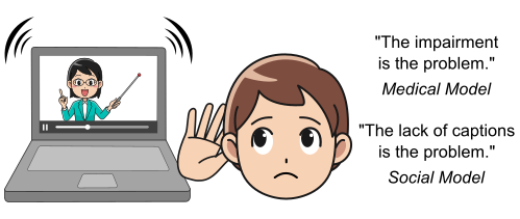 On this page, you can learn:
On this page, you can learn:
An estimated one in five people living in the UK have a disability, including around eight million people of working age. Many of our students and staff will be included in these numbers.
The Social Model of Disability proposes that it’s the barriers and attitudes society places, both purposefully and inadvertently, which disables those unable to work around them. Please ensure the content and activities you create are accessible.
The Equalities Act 2010 requires us to make reasonable adjustments to support learners who have an accessibility requirement. More recent regulations now require websites, intranets and mobile apps for public sector organisations to meet accessibility standards. These legal requirements also cover institutions overseen/funded by public sector bodies, such as Universities.
It may feel like a daunting task ensuring that the materials you create are accessible, but most of the standards are good practice, easily achieved and create an improved experience for everyone. Tools such as MS Office have accessibility checkers built into them. Blackboard Ally and its Course Accessibility Report give you practical advice around improving materials you’ve uploaded into Blackboard.
Learn more about different types of accessibility requirements to help yourself and others.